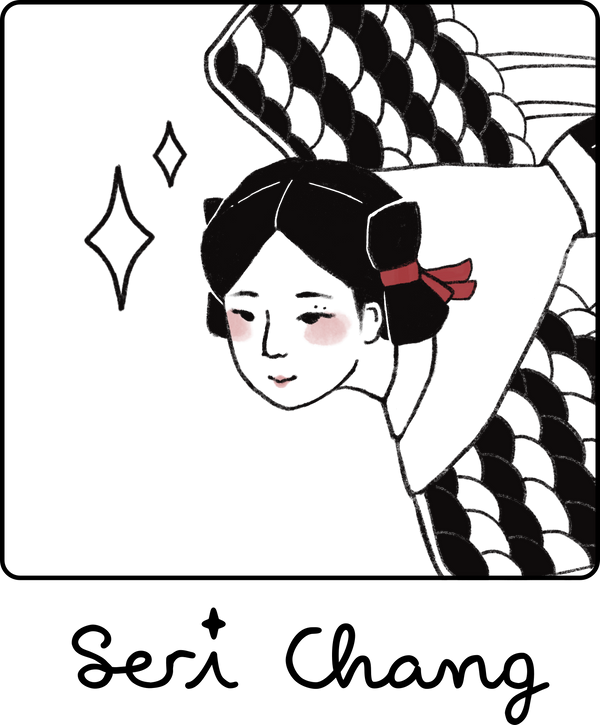Sustainability
This page explains what I do at Seri Chang to be sustainable and transparent. I will always do my best to reduce my impact on the environment.
I will update this page as things change. As a new designer, I had no idea where to start, so I hope this page can also be used as a resource for others!
If there's any way I can improve, please feel free to contact me! I'm always open to suggestions ✩°。
Packaging
Our packaging is either reusable, recyclable, or compostable. However, local rules may vary, so please check those first.
- Box, tape, shipping label:
- Curbside recyclable
- Made from 95-100% recycled content.
- Adhesive is RCA (recycling compatible) and will dissolve during the recycling process.
- Tissue paper
- Curbside recyclable or compostable
- Made from 100% recycled content.
- Some centers decline this because the fibers are too short to make new paper. If this happens, you can compost it in your garden or the green bin instead (please check with local rules first). It is uncoated, chlorine free, and has a neutral pH.
Extras
Our notecards, hang tags, and stickers are paper-based.
- Care tag
- Curbside recyclable. If you lose the tag, you can check our Wash and Care page.
- Printed on 100% cotton based paper.
- Notecard
-
Curbside recyclable paper
-
Curbside recyclable paper
- Washi Sticker
- Check if your recycler accepts stickers. They might need to be placed onto another item (box, paper) before recycling, or disposed entirely if the facility declines them.
- Paper based
Fabric
Most of my fabrics are 100% natural fibers - they are gentle on the skin, don't shed microplastics, and can be composted. Before buying new fabrics, I prioritize secondhand, vintage, and thrifted materials.
Nowadays, most clothes are synthetic (~60%), and fabric has made the same shift (~64%). Synthetics are cheap to produce, versatile, and last "forever" (some won't degrade for hundreds of years). This preference for synthetics makes it hard to find good quality natural fabric, much less secondhand. Using quality natural fibers and upcycling will help us support sustainability and move away from new synthetics.
-
Natural fibers (cotton, linen, hemp, ramie):
- Thrifted or bought new
-
Animal fibers (wool, silk, leather):
- Thrifted or bought new. Leather is not currently used.
-
Synthetic fibers (polyester, rayon, etc.):
- ALWAYS secondhand, deadstock, or recycled. I will not buy new synthetics.
- Synthetic thread will be used if it matches the fabric content, or where unavoidable (interfacing, knotting cord, buttons).
-
Other:
- I use pre-loved clothing and fabric from my own wardrobe or from others in my community.
None of the mentioned companies are affiliated, sponsored, or advertised with me in any way. If this changes in the future, I will disclose it here. All have been a pleasure to work with:
